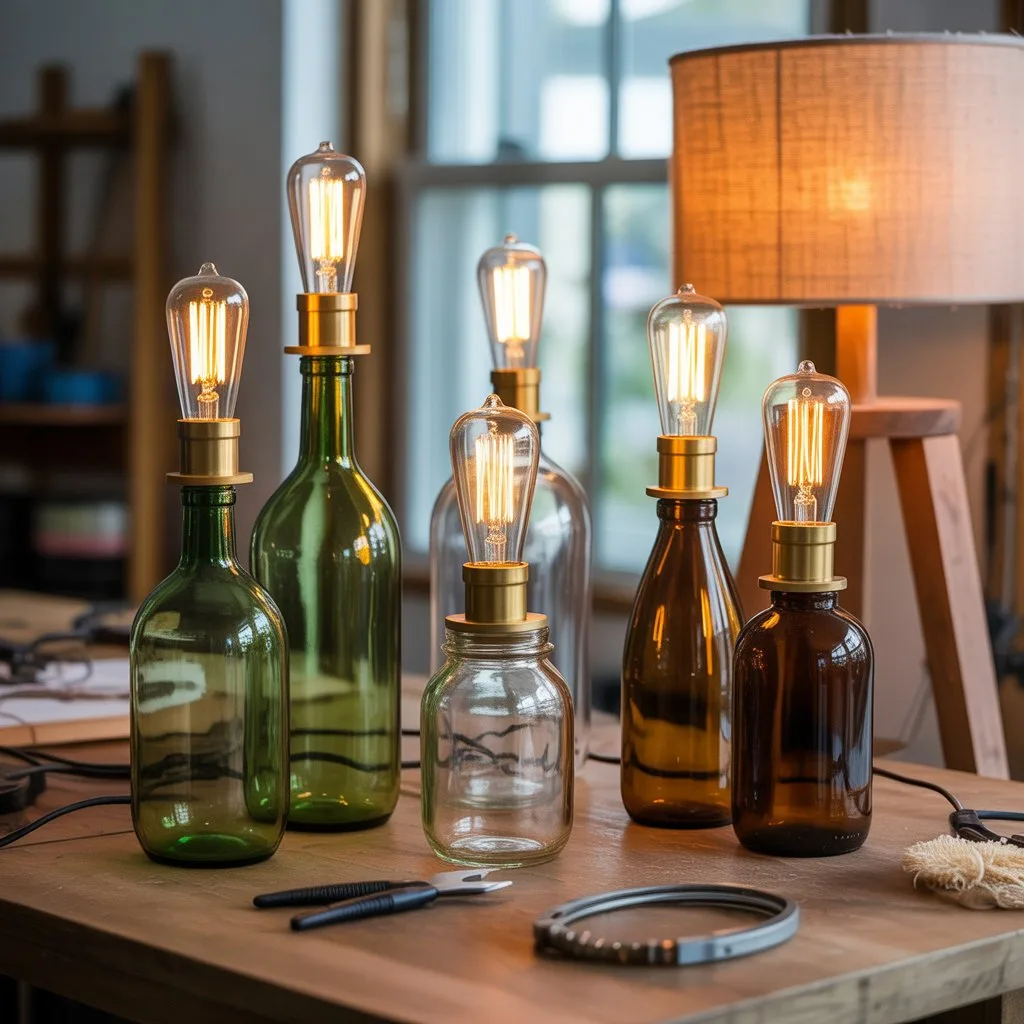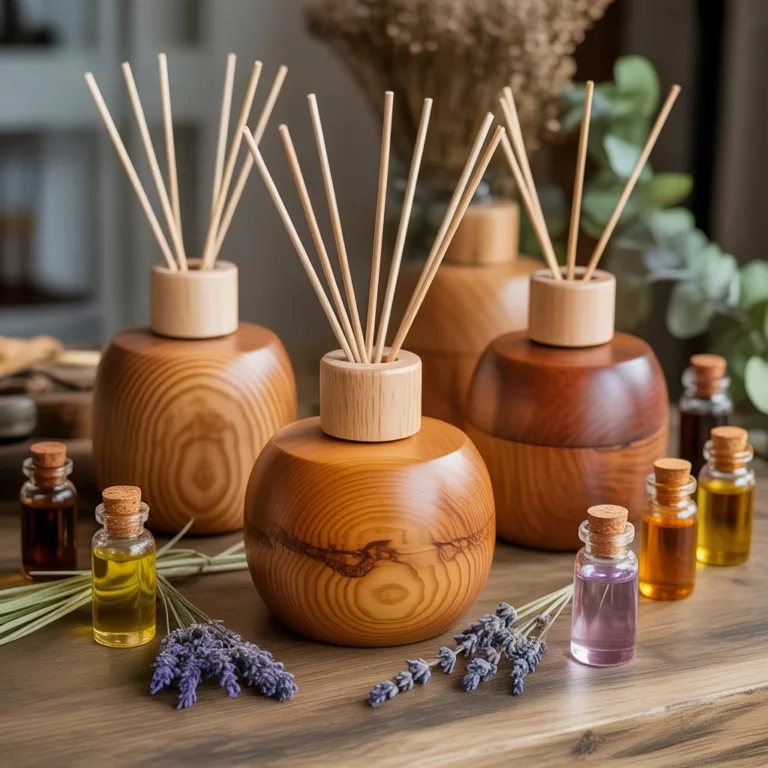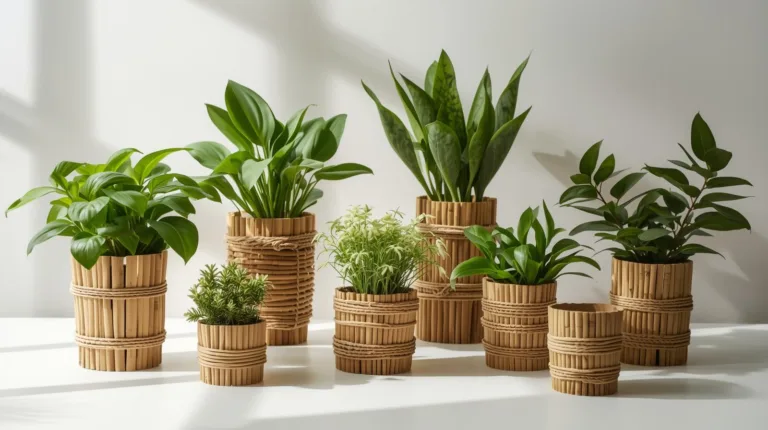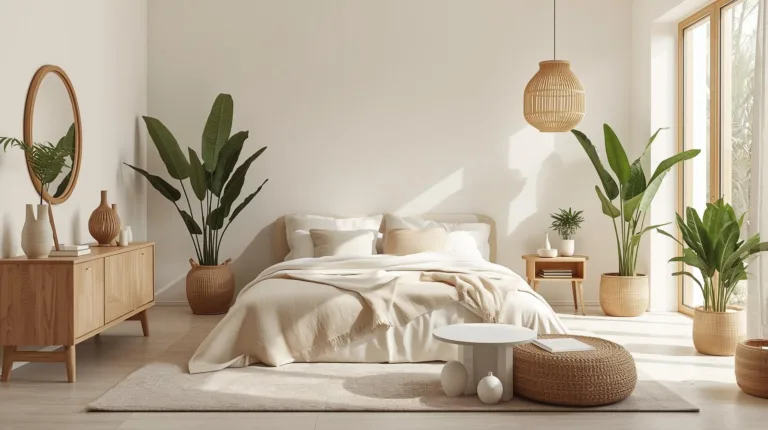Transforming glass bottles into beautiful lamps is one of the most creative and eco-friendly DIY projects you can try at home. It combines sustainability, design, and functionality—breathing new life into discarded bottles while giving your home a stylish, warm touch. Instead of sending glass waste to landfills, you can repurpose it into something that illuminates your space and reflects your personality.

This project perfectly aligns with sustainable living values by reducing waste and encouraging conscious creativity. Whether you’re an experienced crafter or a beginner looking for an inspiring project, turning old glass bottles into lamps offers endless possibilities for design, from rustic and vintage looks to modern minimalist styles.
The Art and Purpose of Upcycling
Upcycling is a process that transforms waste materials or unwanted items into new products with greater environmental value. Unlike recycling, which breaks materials down, upcycling reimagines them creatively while preserving their original integrity.
When you upcycle a glass bottle into a lamp, you’re not just crafting a decorative item—you’re extending the material’s life cycle, reducing your environmental footprint, and promoting conscious consumption. This small but impactful act of sustainability helps demonstrate that beauty and responsibility can coexist.
Why Glass Bottles Make Excellent Lamp Bases
Glass bottles are ideal for lamp-making for several reasons:
- Durability: Glass is long-lasting and can safely hold electrical components with proper insulation.
- Transparency: The material reflects and amplifies light, creating a soft and elegant glow.
- Versatility: Bottles come in various colors, shapes, and sizes—each offering a unique aesthetic.
- Upcycling potential: Every bottle has a story, from a favorite wine to a vintage soda, making your lamp both functional and sentimental.
By combining creativity and sustainability, you can design lamps that perfectly fit your home’s style—whether for a cozy living room corner or a vibrant outdoor area.
Materials and Tools
Gathering your materials before starting ensures a smooth crafting process. Most items are accessible and affordable.
Materials:
- Glass bottles (wine, liquor, or soda bottles work well)
- Lamp kit (socket, cord, and switch)
- Light bulb (LED recommended for safety and energy efficiency)
- Rubber grommet or stopper (for wire entry)
- Decorative elements (paint, twine, fabric, beads, or sand)
Tools:
- Electric drill with glass-cutting bit or diamond-tipped drill bit
- Safety goggles and gloves
- Screwdriver
- Funnel (optional, for filling the bottle with decorative material)
Always ensure you work in a well-ventilated area and follow safety precautions when cutting or drilling glass.
Preparing the Glass Bottle
Before turning a bottle into a lamp, it needs to be properly cleaned and prepared.
- Remove labels: Soak the bottle in warm water with a bit of baking soda. After a few hours, peel off the labels and scrub any residue.
- Clean inside and outside: Use mild detergent and a long brush to remove any dirt or stains.
- Dry thoroughly: Moisture can interfere with electrical components, so ensure the bottle is completely dry before assembly.
If you want to customize the look, this is a great stage to paint or frost the glass. Acrylic or spray paints designed for glass can create beautiful effects such as gradient colors, matte finishes, or stenciled designs.
Drilling the Hole Safely
To turn a bottle into a lamp, you’ll need to drill a hole for the power cord. This is the most delicate part of the process but can be done safely with patience and care.
- Mark the spot: Choose a point near the bottom edge of the bottle for the hole.
- Cool while drilling: Apply water continuously to keep the glass cool and prevent cracking.
- Drill slowly: Use low speed and light pressure with a diamond-tipped bit until the hole is complete.
Once finished, sand the edges of the hole carefully to smooth any sharpness. Insert a rubber grommet to protect the cord from friction.
Assembling the Lamp
With the bottle ready, you can start assembling the lamp’s electrical components.
- Thread the cord through the hole and up the bottle’s neck.
- Attach the lamp socket securely at the top. Many lamp kits include a stopper or adapter that fits snugly into the bottle opening.
- Connect the wiring according to the lamp kit instructions, ensuring all connections are insulated.
- Screw in the light bulb.
If you prefer a cordless design, consider using a rechargeable LED bulb with a built-in battery—an excellent alternative for safety and flexibility.
Design and Decoration Ideas
One of the joys of making glass bottle lamps is the freedom to personalize them. Your design can be elegant, minimalist, bohemian, or rustic—whatever fits your space.
Creative decoration ideas:
- Fill the bottle: Add small pebbles, shells, marbles, or fairy lights inside for a glowing effect.
- Wrap it: Use jute twine, rattan, or rope for a coastal or farmhouse look.
- Paint the surface: Create patterns, ombré effects, or artistic motifs with eco-friendly glass paint.
- Add metallic touches: Use copper or gold accents for a sophisticated, modern appearance.
When decorating, aim to complement your interior style—your lamp should feel like a seamless part of your environment.
Choosing the Right Bulb
The bulb you choose influences both the lamp’s brightness and its atmosphere.
- Warm white bulbs (2700–3000K): Perfect for cozy, relaxing lighting.
- Cool white bulbs (4000–5000K): Ideal for modern or work areas.
- Smart LED bulbs: Allow color control and dimming, offering versatility for mood lighting.
Always choose LED bulbs, which are energy-efficient, cool to the touch, and last much longer than traditional incandescent options.
Making Your Lamp Safe and Durable
Since you’re working with glass and electricity, safety should always come first.
- Double-check that all electrical connections are secure and insulated.
- Use a stable surface to prevent tipping or falling.
- Avoid high-wattage bulbs that may overheat the socket.
- If you plan to use the lamp outdoors, make sure to waterproof the components.
Adding a felt or rubber pad under the bottle base can improve stability and protect your furniture.
The Environmental Impact of Upcycling Glass
Every glass bottle lamp you create is one less item discarded in a landfill. Glass takes thousands of years to decompose, so reusing it significantly reduces environmental harm.
Upcycling promotes:
- Waste reduction: Fewer materials end up in the trash.
- Energy conservation: It avoids the high-energy process of glass recycling.
- Sustainable creativity: It encourages rethinking how we use and value materials.
These small actions collectively contribute to a greener lifestyle and inspire others to make environmentally conscious choices.
Incorporating Bottle Lamps into Your Decor
Glass bottle lamps can adapt to nearly any decor style, making them a versatile addition to your home.
- Rustic charm: Use amber or green bottles with warm-toned bulbs.
- Minimalist design: Clear bottles paired with sleek metallic accents.
- Bohemian atmosphere: Combine multiple bottles of different colors for a vibrant centerpiece.
- Industrial look: Pair with exposed bulbs and black cords.
Whether placed on a nightstand, desk, or outdoor patio, these lamps bring character and sustainability into your space.
Inspiring Others Through Sustainable Design
One of the most fulfilling parts of upcycling is sharing your creations with others. Your glass bottle lamps can serve as gifts, educational projects, or even items to sell at local craft fairs. Each piece tells a story—about creativity, resourcefulness, and commitment to a sustainable lifestyle.
Encouraging children or students to participate in such projects can also instill environmental awareness and hands-on learning. Crafting becomes not only artistic expression but also an act of responsibility toward the planet.
By combining design, sustainability, and creativity, you create a lamp that’s more than just an object—it’s a symbol of mindful living.

Lucas Hartman is a DIY enthusiast and sustainability advocate focused on natural crafts and eco-friendly home décor. With a background in arts and design, Lucas creates tutorials that help families and hobbyists transform everyday recycled or organic materials into beautiful, functional projects.



